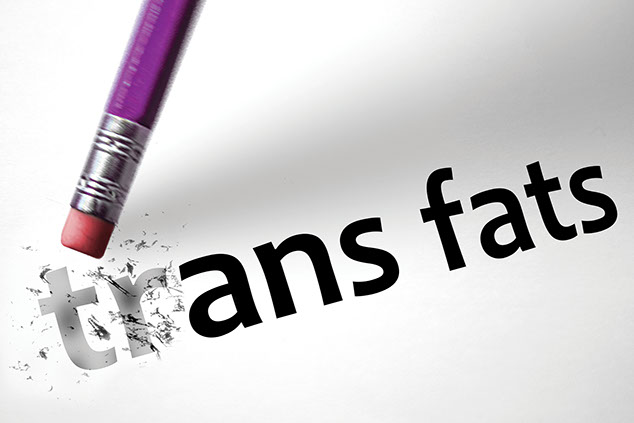SYMPTOM CHECKER
CONDITIONS
Male
Female
Child
Arm, Hand & Shoulder Concerns
Legs & Feet Concerns
Dental & Mouth Concerns
Ear & Nose
Eye Conditions
Head Conditions
Arm, Hand & Shoulder Concerns
Legs & Feet Concerns
Front
Back
Arm, Hand & Shoulder Concerns
Dental & Mouth Concerns
Ear & Nose
Eye Conditions
Head Conditions
Arm, Hand & Shoulder Concerns
Dental & Mouth Concerns
Ear & Nose
Eye Conditions
Head Conditions
Front
Back
Arm, Hand & Shoulder Concerns
Neck Links
Head & Neck Concerns
Arm, Hand & Shoulder Concerns
Neck Links
Head & Neck Concerns
Front
Back
Online Clinic
Wise Healthcare
The skinny on trans fat

Print on Demand
Saturated or unsaturated? Mono or poly? Good or bad?
The FDA has taken action to phase out the remaining trans fat in the nation’s food supply.
Unlike mono and poly unsaturated fats, which are liquid at room temperature, or saturated fats, which occur naturally in animal products such as butter and meat, trans fat is manmade by adding a hydrogen atom to oil and changing its molecular structure.
Crisco may have been the original product for trans fat—a cheap way to add fat to foods and make them shelf-stable. Now, it can be found in everything from donuts to prepackaged cookie dough to boxed macaroni and cheese to microwave popcorn.
“If it’s easy to make and it’s a convenience food, it may have some trans fat in it,” according to experts at Penn State Hershey Medical Center.
Research has shown that trans fat increases bad cholesterol (LDL) levels and lowers levels of the good cholesterol (HDL) in the body. That can lead to a number of problems, such as hardening of the arteries, heart attack, heart disease, and stroke.
The FDA’s action will remove trans fat from a category of foods known as “Generally Recognized As Safe” and place it in the category of food additive, which could open manufacturers up to liabilities if they don’t find an alternative.
This website is not meant to substitute for expert medical advice or treatment. Follow your doctor’s or health care provider’s advice if it differs from what is given in this guide.
The American Institute for Preventive Medicine (AIPM) is not responsible for the availability or content of external sites, nor does AIPM endorse them. Also, it is the responsibility of the user to examine the copyright and licensing restrictions of external pages and to secure all necessary permission.
The content on this website is proprietary. You may not modify, copy, reproduce, republish, upload, post, transmit, or distribute, in any manner, the material on the website without the written permission of AIPM.
2021 © American Institute for Preventive Medicine - All Rights Reserved. Disclaimer | www.HealthyLife.com















































